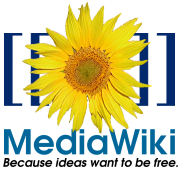Team:DTU-Denmark/Notebook
From 2011.igem.org
Revision as of 00:29, 22 September 2011 by Damian.plichta (Talk | contribs)
Notebook
Experiment: Improving araBAD
Constructed plasmids
PChiP-lacZ fusion
The plasmids containing this DNA fragments were obtained by the following procedure:
- PCR of:
- upstream part of ChiP using E. coli w3110 genomic DNA as a template and TAQ-pfu enzyme mix. Using two different downstream primers (one of which carries the mutations)we obtained two types of ChiP: original and mutated, which has altered binding site for ChiXR.
- lacZ genefrom BBa_I72019 biobrick using TAQ-pfu enzyme mix.
- GFP gene from GFP generator biobrick (BBa_0240) and TAQ-pfu enzyme mix.
- transformation of pSB1K3 with DH5alpha
- Restriction digestions of:
- ChiP original and ChiP mutated with XbaI and NcoI,
- lacZ gene with EcoRI and SpeI
- GFP gene with BspHI and PstI
- pSB1K3 with XbaI and SpeI when it is going to be used for ChiP-lacZ insert and with XbaI and PstI when it is going to be used for ChiP-GFP construct.
- ligations of:
- ChiP normal with lacZ and pSB1K3
- ChiP normal with GFP and pSB1K3
- ChiP mutated with lacZ and pSB1K3
- ChiP mutated with GFP and pSB1K3
- transformations to E. coli NM522 cells.
6. start of a liquid culture of transformed strain. 7. colony PCR to check if there is plasmid of correct size 8. plasmid purification 9. PCR of vector pSB1K3 which was the only choice because it is toxic to the cells so the transformation would be unsuccessful. The original template was obtained from iGEM kit 2011 and this DNA was a template for the PCR. We created also two-step PCR program specifically for the backbones. During performing PCR there was a need to add DMSO to the reaction for it to work. 10. restriction digestions of ChiP_normal:lacZ:pSB1K3, ChiP_normal:GFP:pSB1K3, ChiP_mutated:lacZ:pSB1K3 and ChiP_mutated:GFP:pSB1K3 constructs and pSB1C3 with EcoRI and PstI. 11. ligation of obtained through restriction digestion ChiP_normal:lacZ,ChiP_normal:GFP, ChiP_mutated:lacZ and ChiP_mutated:GFP with digested pSB1C3 12. transformation newly obtained constructs to E. coli NM522, E. coli IG9, E. coli IG302. 13. start of a liquid cultures of transformed strains. 14. colony PCR of this strain 14. plasmid purification and sending DNA to iGEM Headquarters 15. restriction digestion of the obtained plasmid 16. X-gel test if the plasmid is working correctly
PChiP-lacZ fusion
The plasmids containing this DNA fragments were obtained by the following procedure:
- PCR of:
- upstream part of ChiP using E. coli w3110 genomic DNA as a template and TAQ-pfu enzyme mix. Using two different downstream primers (one of which carries the mutations)we obtained two types of ChiP: original and mutated, which has altered binding site for ChiXR.
- lacZ genefrom BBa_I72019 biobrick using TAQ-pfu enzyme mix.
- GFP gene from GFP generator biobrick (BBa_0240) and TAQ-pfu enzyme mix.
- transformation of pSB1K3 with DH5alpha
- Restriction digestions of:
- ChiP original and ChiP mutated with XbaI and NcoI,
- lacZ gene with EcoRI and SpeI
- GFP gene with BspHI and PstI
- pSB1K3 with XbaI and SpeI when it is going to be used for ChiP-lacZ insert and with XbaI and PstI when it is going to be used for ChiP-GFP construct.
- ligations of:
- ChiP normal with lacZ and pSB1K3
- ChiP normal with GFP and pSB1K3
- ChiP mutated with lacZ and pSB1K3
- ChiP mutated with GFP and pSB1K3
- transformations to E. coli NM522 cells.
6. start of a liquid culture of transformed strain. 7. colony PCR to check if there is plasmid of correct size 8. plasmid purification 9. PCR of vector pSB1K3 which was the only choice because it is toxic to the cells so the transformation would be unsuccessful. The original template was obtained from iGEM kit 2011 and this DNA was a template for the PCR. We created also two-step PCR program specifically for the backbones. During performing PCR there was a need to add DMSO to the reaction for it to work. 10. restriction digestions of ChiP_normal:lacZ:pSB1K3, ChiP_normal:GFP:pSB1K3, ChiP_mutated:lacZ:pSB1K3 and ChiP_mutated:GFP:pSB1K3 constructs and pSB1C3 with EcoRI and PstI. 11. ligation of obtained through restriction digestion ChiP_normal:lacZ,ChiP_normal:GFP, ChiP_mutated:lacZ and ChiP_mutated:GFP with digested pSB1C3 12. transformation newly obtained constructs to E. coli NM522, E. coli IG9, E. coli IG302. 13. start of a liquid cultures of transformed strains. 14. colony PCR of this strain 14. plasmid purification and sending DNA to iGEM Headquarters 15. restriction digestion of the obtained plasmid 16. X-gel test if the plasmid is working correctly
 "
"








